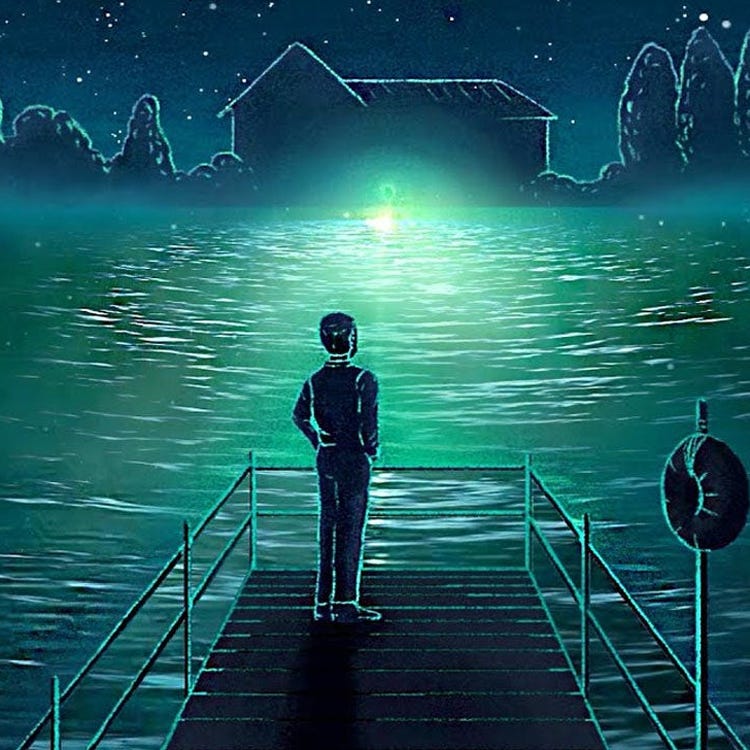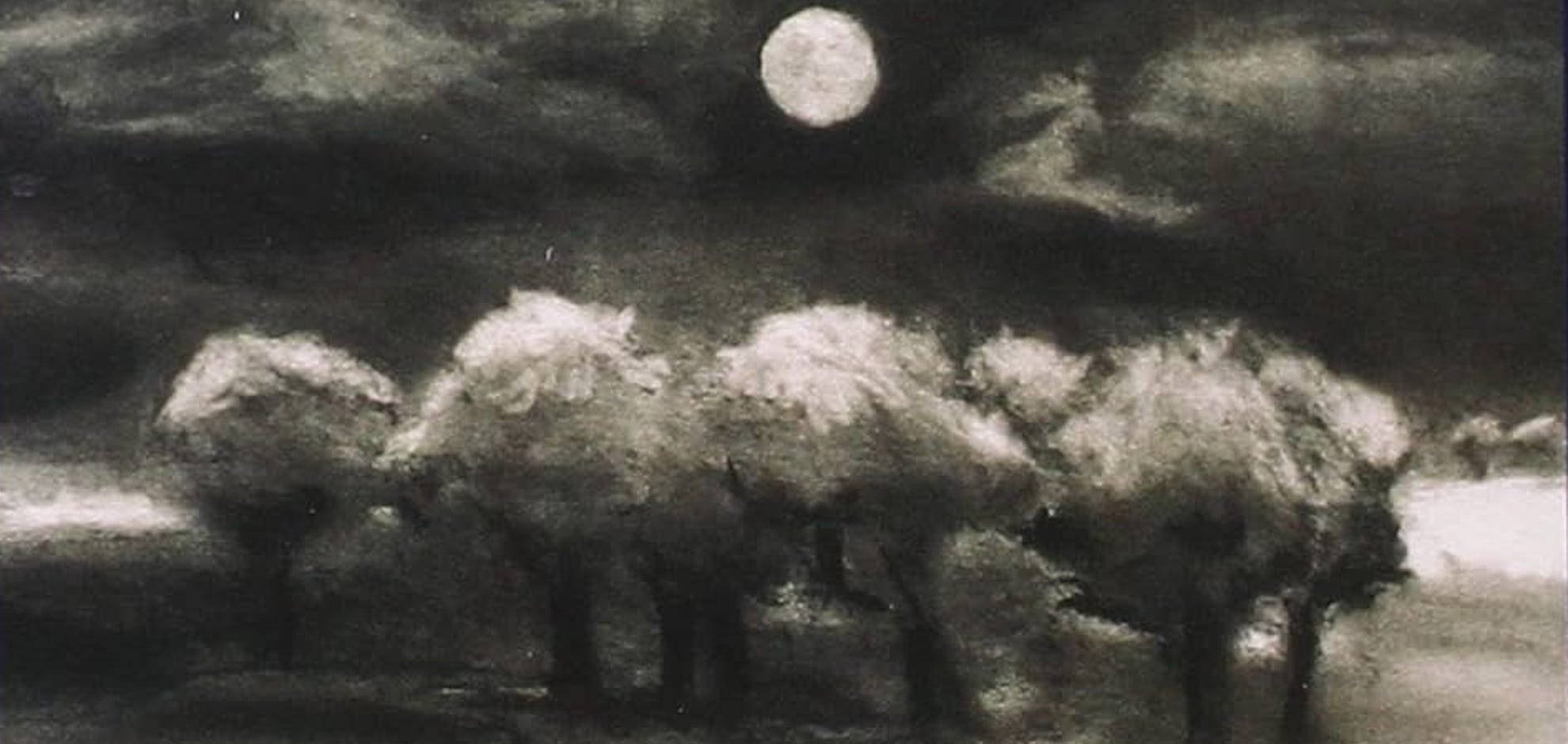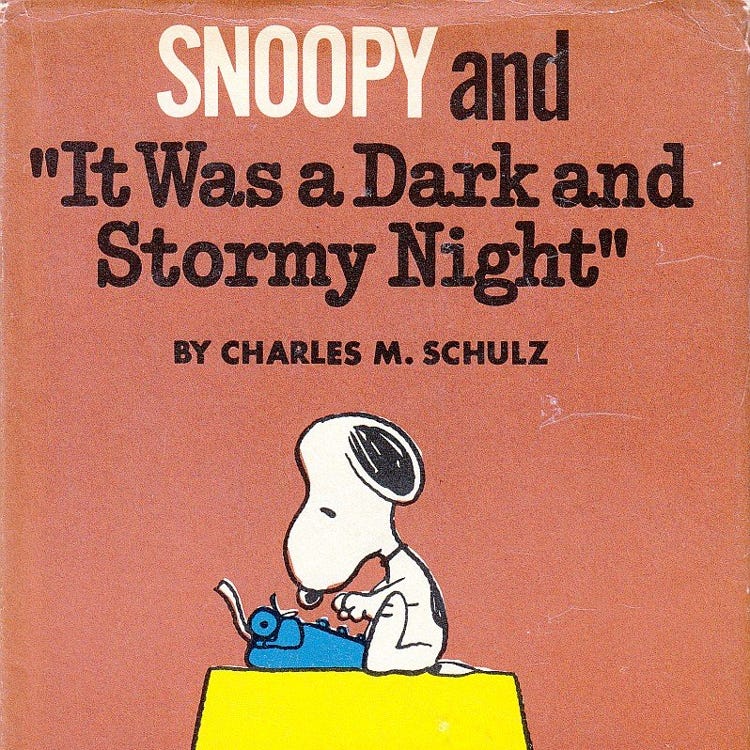✍️ How Your Choice of Words (and When You Use Them) Can Affect the Reader in Different Ways
or, I’ll Do the Rolling, You Do the Detail
One of the things I’m trying to improve on in my novel writing (and writing in general) is getting a better handle on how words said before other words affect later words.
Huh?
Let me give you an example to explain. I was listening to The Tragically Hip song, “Thugs” recently, which goes something like this:
Thugs
by The Tragically HipEveryone's got their breaking point
With me it's spiders, with you it's me
Thugs in perpetuity
When we're excited little birds around the feeder
The cat's indifferent or he's just furious
It seems that he's never neitherI do the rolling, you do the detail
I do the rolling, you do the detailHairbird plucks a hair from a sleeping dog
To build her nest
She says I've looked around and I like your hair the bestI do the rolling, you do the detail
I do the rolling, you do the detailRuby, honey, are you mad at your man?
Ruby, honey, are you mad at your man?
Ah, honey, are you mad at your man?I do the rolling, you do the detail
I do the rolling, you do the detail
I do the rolling, you do the detail
Just the name “Thugs” sets you up. You might expect a hard rock or even punk song to follow. But it’s actually a slow, crunchy groove, which muddies our waters. Happy, uplifting lyrics like “excited little birds around the feeder” are followed quickly about a furious cat. Another beautiful bird image, building her nest, but then the ugly image of her plucking hair from a live, sleeping dog to do it.
Both these refrains lead into an oddly flat chorus: I do the rolling, you do the detail. Which, if sung on their own, would lead you to believe that it’s something relaxing and feel-good like two people painting a wall in perfect harmony. But in context with the way of the words that came before, you get image of two guys in an alley mugging someone: I’ll stick him up, you take his wallet. Still some harmony there maybe, but less feel-good.
Throw in some imagery about a woman being mad at a man (including a comparison with a fear of spiders) and you’ve got… well, after 30 years I still don’t know. But it’s dark and compelling and beautifully confusing. All in 141 words and 19 lines – many of which repeat.
Man, to write words like Gord Downie.
“It was a Dark and Stormy Night…”
Poetry of course relies heavily on the shape of words: how they sound, what they mean, what they double-mean, the rhythm they make, and so on. The shape of the words helps direct the way of words. “Spiders” in the lyrics above puts an even more sinister twist on the meaning of “me” when placed shortly before it.
We can use the technique in fiction and other writing, too, as a way to direct the reader.
Essentially, what we are talking about here is foreshadowing. However, it’s not a straightforward, concrete, “It was a dark and stormy night.” (Which Snoopy creator Charles Schultz recognized as cliché even 50+ years ago…)
Instead, it’s using the shape of words like in poetry to suggest the mood of the piece, which in turn will influence the way readers interpret the words to come after.
For example, in the last paragraphs of The Great Gatsby, Fitzgerald describes the “fresh green breast” of the New World that the first Europeans would have seen. That’s an extremely odd phrase: green breast – at least out of context. But from the start of the novel, “green” has come to represent hope, so that by the end of the novel, the close reader will associate “hope” with that description. In context, it makes sense: hopeful and new. (Before, perhaps, we ruined it…)
Incidentally, I’ve found this works in real life, too. I answer questions in emails from clients almost every day. The difficulty sometimes is that there aren’t any facial or body language cues to help you understand the context, so I have to be very literal in how I write those answers. However, I found that my own analytical mind had a way of inadvertently getting in the way of effectively communicating what the client was really asking.
So, for example, if you asked me, “Can I add an image gallery to my website?”, I perhaps would have said, well, I can look for a plugin, and how many images do you have, and where do you want to put it, and do you want a slideshow and on and on and on – all legitimate questions to help understand what type gallery they want and what they want to achieve.
Today, I start with a very simple word: “Yes.”
The difference slapped me in the face. When you start with “Yes”, the rest is all details. It’s hopeful, it’s productive, and it’s about getting that thing done. Without “Yes”, it’s still murky and confusing and possibly anxiety-ridden. One word sets up the context for everything else that comes to follow, and can dramatically impact the decision-making process on the part of the reader (client).
These are the kinds wayfinders I’m talking about that help subtly direct the reader to read a passage a certain way.
Looking for Clues at the Scene of the Crime
The following is a little bit of me fumbling towards truth. These are writing tactics I’m using right now in my novel and other writing to help me get better at directing the reader, whether it’s for a stronger emotional reaction or to create mystery or to give those subtle hints or to inject symbolism. I’m sure there are many other ways to do it. So please, if you have some ideas, let us know in the comments below!
Choose appropriate imagery to start a scene – Just like in my email example above, opening words immediately set the tone for the scene. So, if you want to foreshadow dread, use dreadful words, like “slimy tofu”. If you want to foreshadow happy, use happy words like “smiling daisies”. Pretty simple and direct (from the writer’s standpoint), but it’s something I need to remind myself of from time to time.
Use colour to convey mood and symbols – I experimented with this a little bit in my first novel, but I’m really leaning into it more for this one. Mostly because this novel will lend itself better to this kind of symbolism. This is common throughout literature and even the movies. I already mentioned the use of green in The Great Gatsby (I talk more about it here, sort of). In The Sixth Sense, red symbolizes the presence of spirits. It becomes a shorthand you can use, like scuba is for “self-contained underwater breathing apparatus” and allows you to evoke those images and emotions again quickly.

Image Credit: Nemo’s Dreamscapes Lean into tropes – I’ve inadvertently been exposed to a lot of Hallmark Christmas movies lately. Often, the couple that ends up in love is the one that doesn’t get along with each other. That’s a trope. Although a trope is sort of a cliché of storytelling, you can use it sparingly as another shorthand to suggest to the reader what might happen next. It also triggers a well-worn path of “will they or won’t they?” that readers tend to like. There are many other tropes to lean into, though I’m trying to lean only slightly… lol
Remove explanations in the editing phase – I find that I’m naturally a “tell don’t show” kind of writer. Maybe it’s my marketing and journalism writing experience. Maybe it’s my literal/analytical mind. I don’t know. In any case, I’ve been stripping away expository explanations, and I’ve been happy with the results. For example, I might initially write, “She pulled away, afraid of letting her true feelings show.” In a later draft, I might change that to, “She pulled away.” It leaves the reader figure out why given the context for the reader. (Read my post about no wasted words here.)
However, you can hint at that context with the words you choose to use before the action. The mere mention of spiders or ice cream or any charged word can influence what the reader will think and feel when they read what comes next. Kind of like how the “dark and stormy night” trope triggers dread and foreboding, but this is much subtler.Create and use character tics – We learn about the people around us largely by what they do in certain situations. Someone who hugs you at any good news. Someone who lashes out when they feel threatened. Someone who gets angry at seemingly meaningless things (“Get off my lawn!”). I’m finding this one difficult to put into practice, but I know it can help us understand the mindset of the characters without having to say much about it. One character in my novel reveals themself in a particular way that I hope will trigger certain realizations and even emotions – another shorthand for the reader to pick up on.
Using concrete symbols – Such as the clock in The Great Gatsby representing the time Gatsby has with Daisy or the sled in Citizen Kane. Not only can these evoke certain emotions in the reader, it’s another shorthand to help reach the reader understand the context at specific points in the story.
We are programmed to constantly look for clues to determine our relative safety, prospects for food, and prospects for procreation. We make assumptions based on those clues. It’s not always logical and it’s not always right – which is one reason why plot twists work so well.
But we writers can use that pre-programming to our advantage, setting up moods and situations through words to gently direct our readers from one signpost to the next. Maybe lighter reading needs less subtlety than deeper works, and that too is something we need to gauge and deliver to our readers.
Key Takeaways: We’re all looking for clues in life and in the things we read. The types of words you use can help you set up the reader for what’s to come. Giving readers those clues, including through the use of specific, charged words to signal context for the reader, makes for a more satisfying read and allows you a way to point the reader in the right direction. These clues lie on a spectrum betweeen subtle and obvious, and where your writing lands on that spectrum depends on how light or deep the piece is.
Over to You: How Do You Use Foreshadowing to Give Context?
Maybe this is all basic stuff for you. It’s something I’m learning and thought I’d share. Sometimes, subtlety is difficult for me! And this is certainly a more subtle form of foreshadowing than the “dark and stormy night” tropes that hit you in the face. If you have any tips I’ve missed here, please do let me know. The more ideas I can try, the better!
I’ll leave you with The Tragically Hip’s Thugs below. One of my favourites!
A last note: I will be taking a one-month break from To Write with Wild Abandon due to a number of deadlines I have this month. A whole month sounds dramatic, but it essentially amounts to one post. I’ll be back January 28.
Thanks so much for reading this year. It means a lot to me to have so many engaged and caring readers. Wishing you a very happy 2025!
Until next time... keep writing with wild abandon!
~Graham
email me if you get lost.






Well Grant, you put Thugs up front, and once I read the words I had to hear it, so I popped on the headphones and entered the sonic world of The Tragically Hip. It rendered me incapable of attending to any of the details in the rest of your piece, but I’ll come back to it later when my head is clear of song. But first, Buck Owens singing “Ruby”: Honey are you mad at your man.